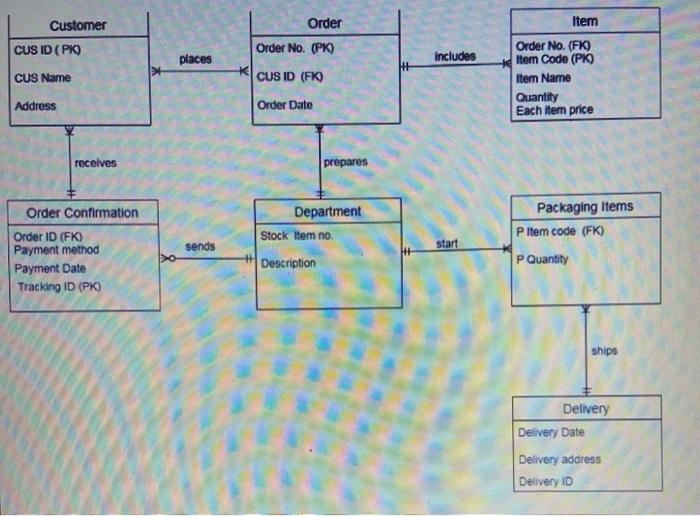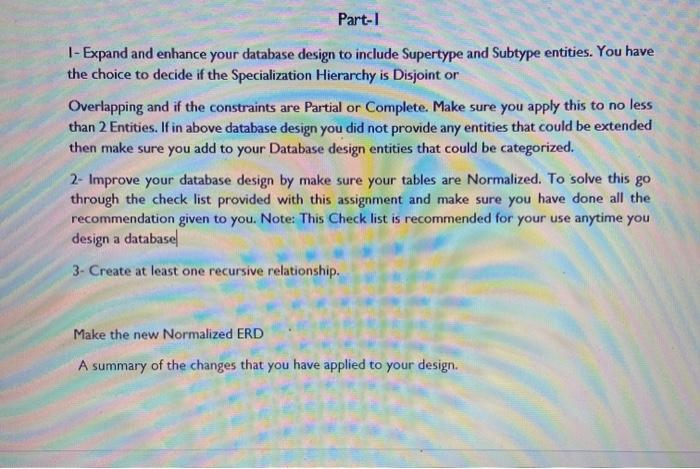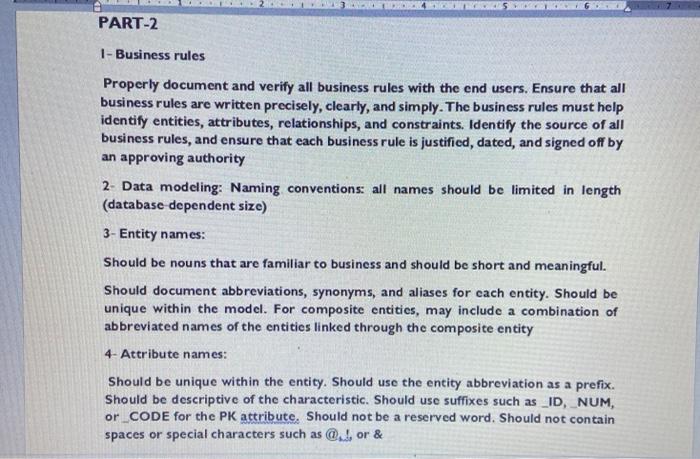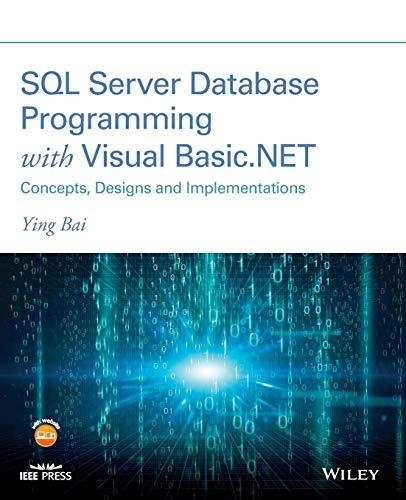Customer Item Order Order No. (PK) CUS ID (PK) places includes CUS Name CUS ID (FK) Order No. (FK) Item Code (PK) Item Name Quantity Each item price Address Order Date receives prepares Department Packaging Items P Item code (FK) Stock Item no Order Confirmation Order ID (FK) Payment method Payment Date Tracking ID (PK) sends start ++ Description P Quantity ships Delivery Delivery Date Delivery address Delivery ID Part-1 I- Expand and enhance your database design to include Supertype and Subtype entities. You have the choice to decide if the Specialization Hierarchy is Disjoint or Overlapping and if the constraints are Partial or Complete. Make sure you apply this to no less than 2 Entities. If in above database design you did not provide any entities that could be extended then make sure you add to your Database design entities that could be categorized. 2- Improve your database design by make sure your tables are Normalized. To solve this go through the check list provided with this assignment and make sure you have done all the recommendation given to you. Note: This Check list is recommended for your use anytime you design a database 3- Create at least one recursive relationship. Make the new Normalized ERD A summary of the changes that you have applied to your design. PART-2 1 - Business rules Properly document and verify all business rules with the end users. Ensure that all business rules are written precisely, clearly, and simply. The business rules must help identify entities, attributes, relationships, and constraints. Identify the source of all business rules, and ensure that each business rule is justified, dated, and signed off by an approving authority 2- Data modeling: Naming conventions all names should be limited in length (database dependent size) 3- Entity names: Should be nouns that are familiar to business and should be short and meaningful. Should document abbreviations, synonyms, and aliases for each entity. Should be unique within the model. For composite entities, may include a combination of abbreviated names of the entities linked through the composite entity 4- Attribute names: Should be unique within the entity. Should use the entity abbreviation as a prefix. Should be descriptive of the characteristic. Should use suffixes such as _ID,_NUM, or_CODE for the PK attribute. Should not be a reserved word. Should not contain spaces or special characters such as @lor & Documenti Word Product Activation Failed References Review View Aa ... 2! AYA. AaBb C Bbcc AaBb AaBbc Aat AaBbce AC T Normal 1 No Spac.. Heading1 Heading 2 Title Subtitle Su Paragraph Styles PART-2 5- Relationship names: Should be active or passive verbs that clearly indicate the nature of the relationship 6- Entities: Each entity should represent a single subject. Each entity should represent a set of distinguishable entity instances. All entities should be in 3NF or higher. Any entities below 3NF should be justified. Granularity of the entity instance should be clearly defined. PK should be clearly defined and support the selected data granularity 7- Attributes: Should be simple and single valued (atomic data). Should document default values, constraints, synonyms, and aliases. Derived attributes should be clearly identified and include source(s). Should not be redundant unless this is required for transaction accuracy, performance, or maintaining a history. Nonkey attributes must be fully dependent on the PK attribute 8- Relationships: Should clearly identify relationship participants. Should clearly define participation, connectivity, and document cardinality 9- ER model: Should be validated against expected processes: inserts, updates, and deletions. Should evaluate where, when, and how to maintain a history. Should not contain redundant relationships except as required. Should minimize data redundancy to ensure single place updates. Should conform to the minimal data rule: All that is Documenti WordPrediale Sedert Design Laju Ferences Lagu Pele Sans MT 14 - AAA 2 T BIU A- 18- Aat Tommal. No Space Healing Heading? Title Subtitle Styles Font Paragraph You can take 10-12 hours for completing this w 5 6











